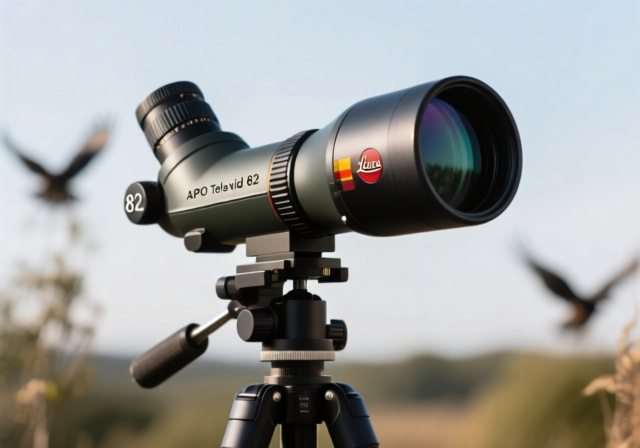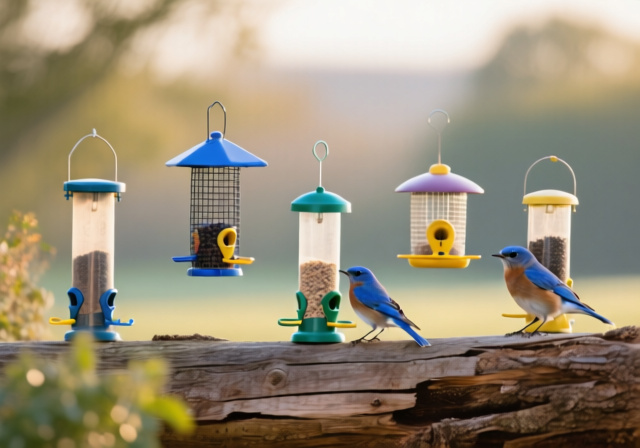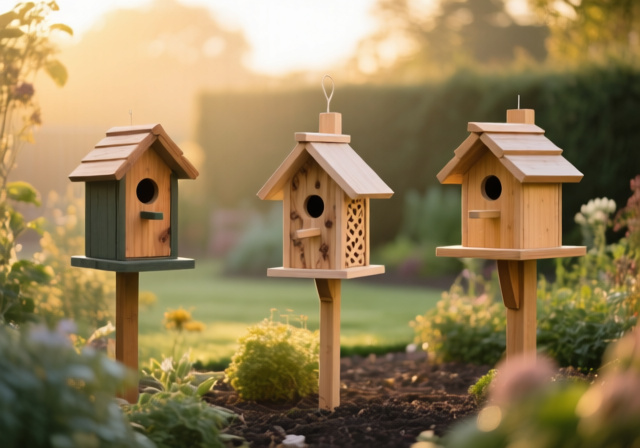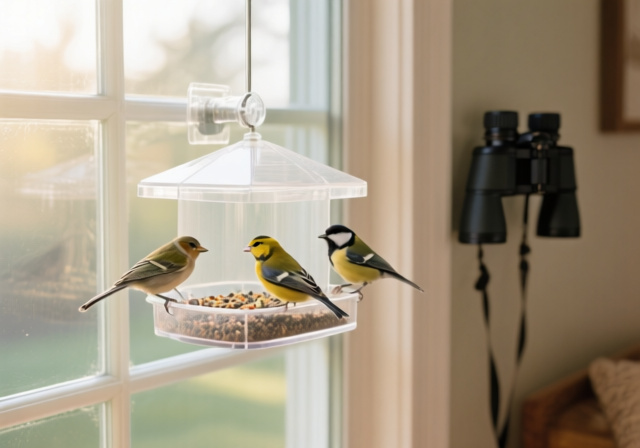

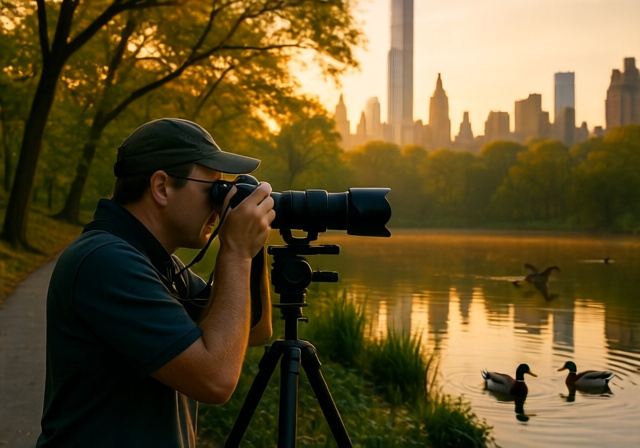

Birdwatching in Central Park isn’t just an activity—it’s an experience that combines urban wilderness with world-class birding opportunities. As a photographer who’s spent countless mornings in the park with camera in hand, I can tell you there’s nothing quite like watching the sunrise while warblers dart through the trees above.
Central Park is one of the premier urban birding locations in the United States, hosting over 210 bird species annually along the Atlantic Flyway migration route. This 843-acre oasis serves as a crucial rest stop for thousands of migrating birds traveling between North and South America.
Birdwatching in Central Park is perfect for nature enthusiasts visiting NYC, local residents seeking urban wildlife experiences, photographers interested in bird photography, and birders of all experience levels.
This guide will show you exactly where to find the best birding spots, when to visit for peak activity, what equipment you need, and how to capture stunning photographs of your feathered subjects.
The Ramble is Central Park’s premier birding location—a 36-acre woodland area in the park’s center that feels like a genuine forest. With its dense canopy, winding trails, and The Gill stream running through it, this area attracts an incredible variety of species.
Why it’s special: The diverse woodland habitat creates multiple microenvironments. You’ll find everything from dense thickets favored by thrushes to open areas perfect for spotting warblers. The Ramble’s central location and mature trees make it a magnet for migrating birds seeking rest and food.
Photography tips: The dense canopy creates challenging lighting conditions. I typically shoot at ISO 800-1600 during early morning hours. Look for natural clearings where light breaks through—the Azalea Pond and Bow Bridge areas are particularly good. Use a fast lens (f/2.8 or wider) if possible, and don’t be afraid to push your ISO.
Getting there: Enter at 72nd Street and Central Park West, then follow the paths westward. The Ramble is immediately south of Strawberry Fields. For the best early morning birding, arrive by 6 AM during migration season.
Species highlights: Over 30 warbler species in spring, thrushes, flycatchers, vireos, and year-round residents like Northern Cardinals and Blue Jays.
If The Ramble feels too crowded, head to North Woods—a 90-acre forested area in the park’s northwest corner that offers a more secluded birding experience. This area receives significantly less foot traffic but maintains excellent habitat diversity.
Why it’s special: The varied terrain includes the Loch (a stream), the Pool (a pond), and dense forest sections. This diversity attracts both woodland and water-associated species. The quieter environment means birds are often more approachable here.
Photography tips: The darker forest conditions require patience and often a tripod or monopod. I’ve found success using slower shutter speeds (1/125s) with image stabilization for perched birds. The Loch area offers opportunities for reflected shots on calm days.
Getting there: Enter at 100th Street and Central Park West. Follow the path around the Pond (stay to the right) and head into the North Woods/Loch area—it will be a downhill path. The closest subway is the 1 or 2 train to 96th Street.
Species highlights: Woodpeckers (Pileated, Red-bellied), owls (Great Horned, Barred), forest thrushes, and wintering finches.
The 40-acre Jacqueline Kennedy Onassis Reservoir is Central Park’s largest water body and a haven for waterfowl, especially during winter months. The 1.58-mile running track surrounding it provides excellent vantage points.
Why it’s special: The open water attracts ducks, geese, and other waterbirds that rarely visit other park areas. The surrounding oak trees provide perches for raptors, and the open views make spotting distant birds easier than in wooded areas.
Photography tips: Waterfowl are often far from the shore, so bring your longest lens. A 400mm+ focal length is ideal. Use a fast shutter speed (1/1000s or faster) to freeze motion, especially for flying birds. The west side typically has better morning light.
Getting there: Multiple access points from 86th to 96th streets on both east and west sides. The 90th Street entrance on the west side is closest to the best waterfowl viewing areas.
Species highlights: Ruddy Ducks, Northern Shovelers, mergansers, gulls (including rare species), and Red-tailed Hawks hunting from surrounding trees.
This four-acre secluded woodland near the Pond is one of Central Park’s least-visited areas, making it perfect for finding shy species. Limited access (open only certain hours and with small groups) means undisturbed habitat.
Why it’s special: The sanctuary’s protected status has created pristine habitat that attracts species avoiding more trafficked areas. The quiet environment and dense cover make it ideal for finding migrants seeking refuge.
Photography tips: The restricted access means you can set up and wait without constant interruptions. Use a blind approach—find a good spot and let the birds come to you. The canopy is relatively open here, allowing better light than in The Ramble.
Getting there: Located just south of Wollman Rink near 60th Street. Check with the Central Park Conservancy for current access hours as they vary seasonally.
Species highlights: Rare warblers during migration, skulking species like Ovenbirds and thrushes, and occasional surprises like crossbills in winter.
At 137.5 feet, Summit Rock is Central Park’s highest natural elevation. This rocky outcrop offers 360-degree views above the tree canopy, making it perfect for spotting raptors and flying birds.
Why it’s special: The elevation puts you at treetop level, offering unique perspectives on birds. During spring and fall migration, it’s one of the best places to watch hawks, eagles, and other raptors passing overhead.
Photography tips: Backlighting is common in early morning. Use exposure compensation (+1 to +2 stops) to avoid silhouettes. A wider lens (24-70mm) works well for flight shots, while a telephoto captures distant raptors. The nearby Belvedere Castle offers similar opportunities.
Getting there: Located west of the Ramble, near 83rd Street. Closest entrance is 81st Street and Central Park West.
Species highlights: Broad-winged Hawks during migration, Red-tailed Hawks year-round, Merlin and Kestrel in fall, and warblers at treetop level in spring.
Timing is everything in birding, and Central Park’s birdlife changes dramatically throughout the year. The park offers excellent birding in every season, but different times bring different opportunities.
Early morning (dawn to 9 AM) is prime time. Birds are most active after waking up, and the softer light is ideal for photography. Late afternoon (4 PM to dusk) offers a second activity peak as birds feed before roosting.
Midday birding (10 AM to 3 PM) is typically slowest, especially in summer. However, winter midday can be productive as birds feed throughout shorter daylight hours.
Spring is magical in Central Park. April brings the first wave of warblers and early migrants. May is peak season—some days see 20+ warbler species. The park becomes a magnet for neotropical migrants.
Best spots: The Ramble for warblers, Summit Rock for flyovers, anywhere with blooming trees for insect-eating species.
Summer focuses on resident birds and nesting species. Start very early (by 5:30 AM) as activity drops quickly by 9 AM. Look for young birds being fed by parents.
Best spots: North Woods for nesting thrushes, The Ramble for resident cardinals and blue jays, water edges for swallows.
Fall migration is more spread out than spring. September brings warblers again, October is peak for raptors, and November sees waterfowl arrival. Weather plays a big role—north winds after cold fronts bring the biggest movements.
Best spots: Summit Rock for raptors, The Reservoir for waterfowl, any fruiting trees for migrating thrushes.
Winter birding surprises many visitors. The Reservoir hosts diverse waterfowl, owls become more visible in leafless trees, and hardy songbirds flock to feeders.
Best spots: The Reservoir for ducks and gulls, North Woods for owls and woodpeckers, any berry-producing trees for waxwings.
Having the right equipment transforms your birding experience. After testing various setups over 15 years of bird photography, here’s what works best in Central Park’s unique conditions.
Good binoculars are non-negotiable. For Central Park’s varied conditions, I recommend 8×42 or 8×32 models. The 8x magnification provides good detail without excessive shake, while 42mm objective lenses gather enough light for the park’s shaded areas.
If you wear glasses, pay attention to eye relief—look for models with at least 16mm. Using binoculars with glasses requires proper eyecup adjustment for the full field of view.
Understanding binocular numbers helps you choose: the first number is magnification, the second is the objective lens diameter in millimeters.
⚠️ Important: You don’t need professional gear to enjoy bird photography. Modern smartphones with zoom capabilities can capture decent images, especially with good light and close subjects.
For serious photography, a DSLR or mirrorless camera with a telephoto lens is ideal. I use a 100-400mm lens for versatility—wide enough for environmental shots, long enough for close-ups. For maximum reach, a 150-600mm lens works well but adds weight.
Camera settings: Start with aperture priority (A/Av mode), f/5.6-f/8 for depth of field, ISO as low as light allows, and continuous autofocus with animal eye detection if available.
For distant waterfowl on The Reservoir or raptors at Summit Rock, a spotting scope vs binoculars comparison reveals the scope’s advantages. Scopes provide 20-60x magnification versus typical 8-10x binoculars.
I carry a compact spotting scope for winter waterfowl counting and rare bird verification. It’s especially useful when leading groups or documenting unusual sightings.
For dawn and dusk birding when light is challenging, low light binoculars with larger objective lenses (50mm+) can make a significant difference in spotting ability.
Capturing compelling bird photos in Central Park requires adapting to urban challenges. Here are techniques I’ve developed over thousands of hours in the field:
The park’s tall buildings create unique lighting challenges. Early morning light filters between skyscrapers, creating dramatic but difficult conditions. I’ve learned to embrace these challenges rather than fight them.
Use spot metering on your subject to avoid exposure issues from bright backgrounds. In backlit situations, expose for the bird and accept silhouettes, or use flash with a Better Beamer attachment for fill light.
Golden hour (first hour after sunrise) is magical but brief. Have your gear ready before entering the park—missing the best light while fumbling with equipment is a common beginner mistake.
Birds in Central Park are habituated to people but still require careful approach. Move slowly and predictably. I’ve found that sitting quietly often brings birds closer than active searching.
Use natural cover—trees, benches, and terrain features—to break up your outline. Avoid direct eye contact, which birds perceive as threatening. Instead, watch with your peripheral vision.
For photography, pre-focus on likely perches. When a bird lands, you can shoot immediately rather than losing shots to autofocus hunting.
Each hotspot requires different techniques. In The Ramble’s dense vegetation, I often use a wider aperture (f/2.8-f/4) to separate birds from busy backgrounds. At The Reservoir, I stop down to f/8-f/11 for sharper waterfowl images.
Summit Rock requires anticipating flight paths. I position myself with the sun behind me and watch for birds approaching at eye level. North Woods’ darker conditions demand higher ISO or slower shutter speeds—here, image stabilization is crucial.
For more general photography techniques that apply to birding, check out our night photography techniques article—many principles about shooting in low light translate well to dawn birding.
Central Park hosts an impressive variety of birds throughout the year. Here are the species you’re most likely to encounter, organized by season and habitat preference:
These hardy species can be found in Central Park regardless of season:
Spring migration is Central Park’s birding highlight. Warbler species steal the show:
Fall migration includes many spring species plus raptors:
Winter brings northern species and waterfowl concentrations:
Central Park is easily accessible by NYC public transportation. Here’s how to reach the best birding areas:
Parking near Central Park is expensive and limited. If driving is necessary:
Central Park is laid out logically but can be confusing to first-time visitors:
Responsible birding ensures the park remains a haven for birds and future generations. These guidelines apply especially to photographers:
Spring and summer require extra care:
✅ Pro Tip: The best bird photographs come from patience, not pressure. Find a good spot, stay quiet, and let birds come to you naturally.
The Central Park birding community is welcoming but follows certain etiquette:
Remember: we’re guests in the birds’ home. Leave no trace, take only photos, and help preserve this urban oasis for future generations of both birds and birders.
The Ramble is Central Park’s premier birding location. This 36-acre woodland area offers diverse habitat with The Gill stream, dense canopy, and abundant bird life. For fewer crowds, try North Woods. For waterfowl, visit The Reservoir.
Early morning (dawn to 9 AM) is optimal as birds are most active after waking up. Late afternoon (4 PM to dusk) offers a second activity peak. During migration season, arrive by 6 AM for the best sightings.
Central Park hosts over 210 bird species annually throughout the seasons. Approximately 30-40 species are year-round residents, while the rest are seasonal migrants passing through along the Atlantic Flyway.
Essential equipment includes binoculars (8×42 recommended), a field guide or bird ID app, comfortable walking shoes, water, and weather-appropriate clothing. For photography, bring a camera with telephoto lens (200mm+ minimum).
Spring migration peaks in April-May, especially May for warblers. Fall migration runs September-November, with September for warblers and October for raptors. These periods offer the highest species diversity and numbers.
Yes, Central Park is exceptional for birding. As a vital stopover on the Atlantic Flyway, it’s one of the world’s premier urban birding locations, offering easy access to diverse habitats and over 210 species annually.
After spending hundreds of mornings in Central Park with binoculars and camera in hand, I can tell you that every visit offers something new. The park’s combination of accessible location, diverse habitats, and impressive species list makes it a world-class birding destination.
Start early, be patient, and explore different areas. Don’t feel pressured to see rare birds—watching common species’ behavior is equally rewarding. And bring your camera; Central Park’s birds make beautiful subjects against the urban backdrop.
Whether you’re a beginning birder or experienced photographer, Central Park welcomes all who appreciate nature’s beauty. The birds are waiting—grab your binoculars and discover this urban oasis for yourself.


